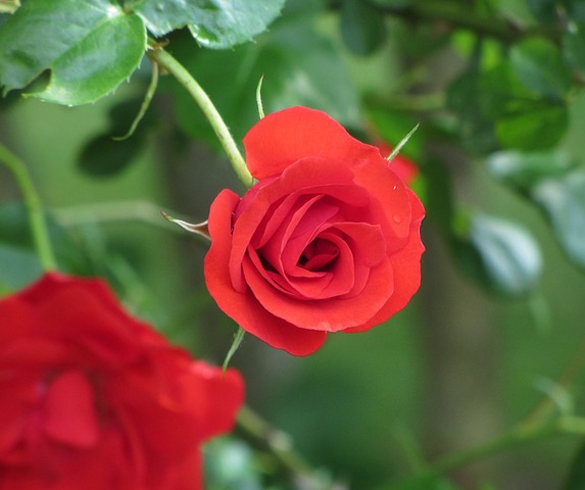
Growing Mini Roses Indoors
– Kathy Bond-Borie, Guest Columnist – Even though the weather has turned cold and we\’ve put our garden roses to bed for the winter, that doesn\’t mean we have to be rose-deprived until spring. Miniature roses adapt quite well to life indoors. They are a bit more particular about light and humidity than some indoor flowering plants, but they will reward the extra effort with stunning flowers that come in a wide range of colors.
For the most part, miniature roses are scaled-down versions of full-sized roses, and while they vary in many ways, all mini roses have small, rarely fragrant flowers. Plants can range from micro-minis (5 inches or less) to 3 to 4 feet or even larger. Flowers can be anywhere from 1/2 to 2 inches across, with a color range as broad as for full-size roses.
Mini roses need plenty of bright light, such as in a bright west- or south-facing window. But for repeat bloom, you\’ll need the supplementary light provided by fluorescent tubes. Also provide some extra humidity around the plants because indoor air is typically quite dry. Set plants in a water-filled tray on a layer of pebbles, or use a room humidifier. If humidity is too low, the leaves will shrivel, turn yellow, and drop. Here are some other tips:
- Buy new plants each season to ensure that your plants are free of diseases and pests. Choose varieties that are short and especially floriferous.
- Fertilize weekly with a fertilizer diluted to one-quarter strength. To encourage blooms, use a fertilizer with a formula high in potassium, such as 5-5-10.
- Watch carefully for any sign of pests. Spray whiteflies with a lightweight horticultural oil. If spider mites become a problem, wash plants thoroughly every 2 to 3 days. For a severe infestation of spider mites, strip all leaves and cut the plant back by half. Healthy new growth will emerge rapidly.
- Use a commercial potting mixture containing perlite and vermiculite when repotting.
- When flowering has finished, place plants under fluorescent lights to encourage reblooming in about six weeks.
- After the last frost in spring, gradually acclimate plants to outdoor air. Plant them in the garden or in an outdoor container.
For more tips and garden information visit www.garden.org
A former floral designer and interior plantscaper, Kathy Bond-Borie has spent 20 years as a garden writer/editor, including her current role as Horticultural Editor for the National Gardening Association. She loves designing with plants, and spends more time playing in the garden – planting and trying new combinations – than sitting and appreciating it.
Source
National Gardening Association


